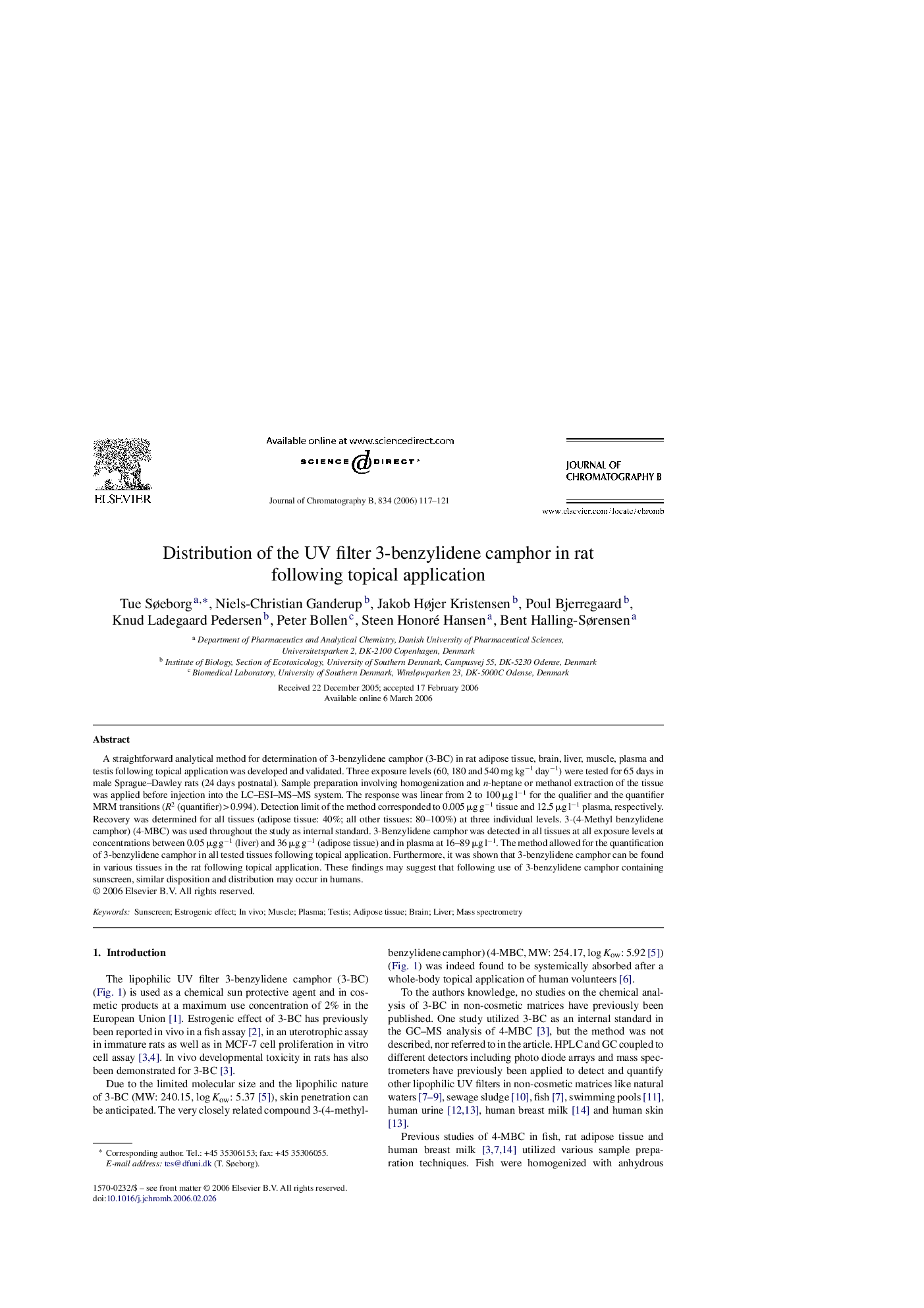| Article ID | Journal | Published Year | Pages | File Type |
|---|---|---|---|---|
| 1216663 | Journal of Chromatography B | 2006 | 5 Pages |
A straightforward analytical method for determination of 3-benzylidene camphor (3-BC) in rat adipose tissue, brain, liver, muscle, plasma and testis following topical application was developed and validated. Three exposure levels (60, 180 and 540 mg kg−1 day−1) were tested for 65 days in male Sprague–Dawley rats (24 days postnatal). Sample preparation involving homogenization and n-heptane or methanol extraction of the tissue was applied before injection into the LC–ESI–MS–MS system. The response was linear from 2 to 100 μg l−1 for the qualifier and the quantifier MRM transitions (R2 (quantifier) > 0.994). Detection limit of the method corresponded to 0.005 μg g−1 tissue and 12.5 μg l−1 plasma, respectively. Recovery was determined for all tissues (adipose tissue: 40%; all other tissues: 80–100%) at three individual levels. 3-(4-Methyl benzylidene camphor) (4-MBC) was used throughout the study as internal standard. 3-Benzylidene camphor was detected in all tissues at all exposure levels at concentrations between 0.05 μg g−1 (liver) and 36 μg g−1 (adipose tissue) and in plasma at 16–89 μg l−1. The method allowed for the quantification of 3-benzylidene camphor in all tested tissues following topical application. Furthermore, it was shown that 3-benzylidene camphor can be found in various tissues in the rat following topical application. These findings may suggest that following use of 3-benzylidene camphor containing sunscreen, similar disposition and distribution may occur in humans.
